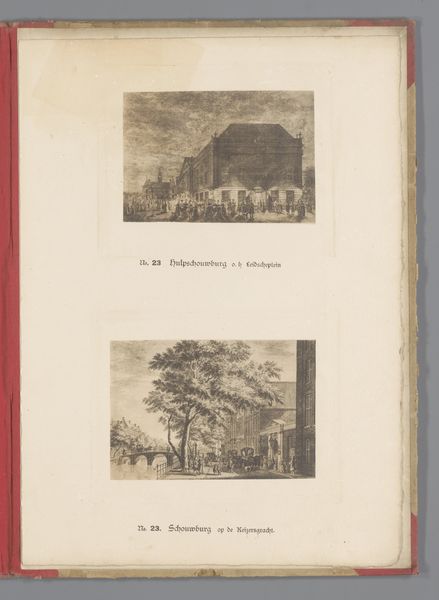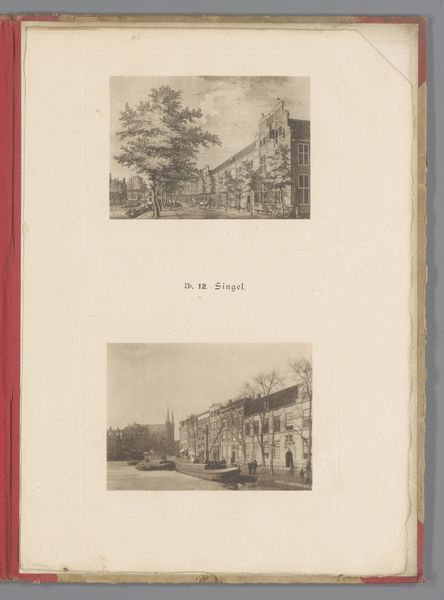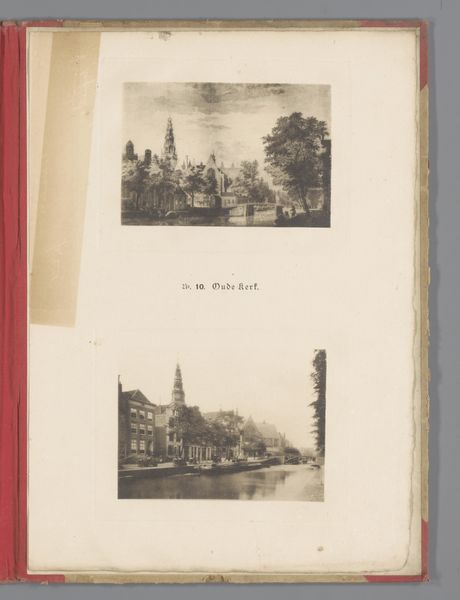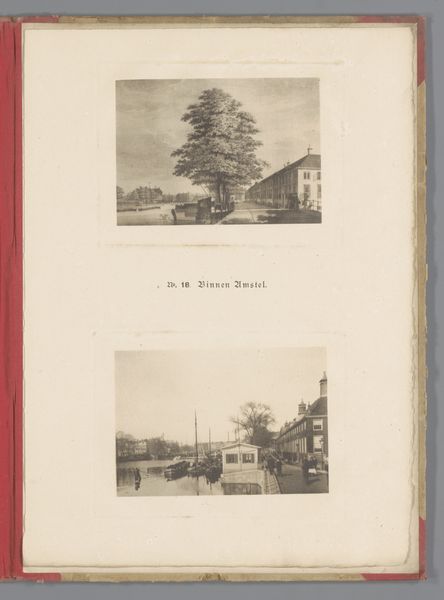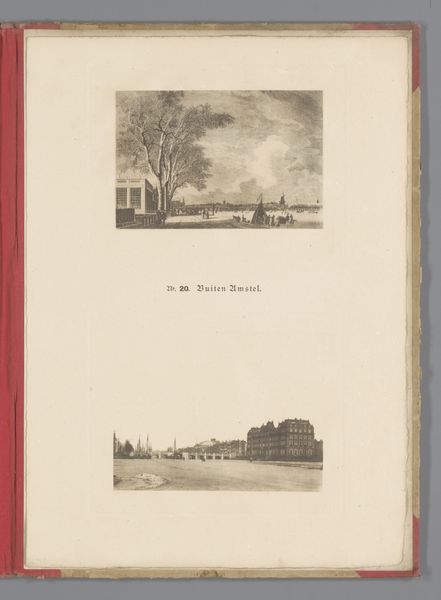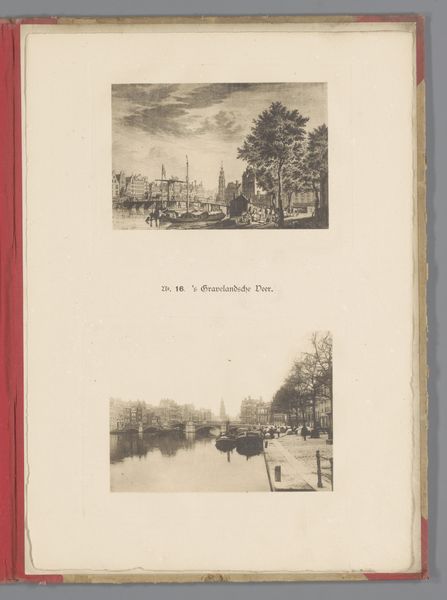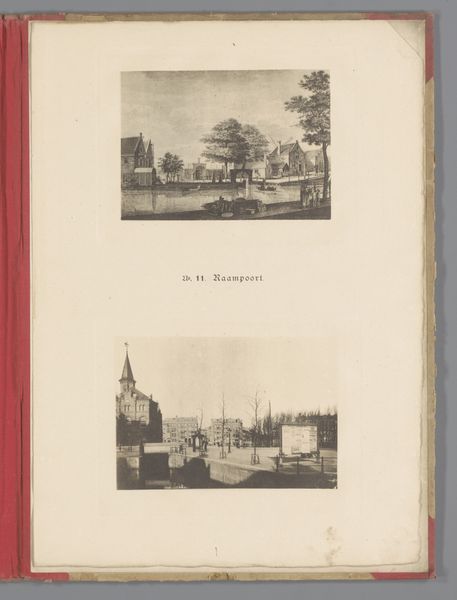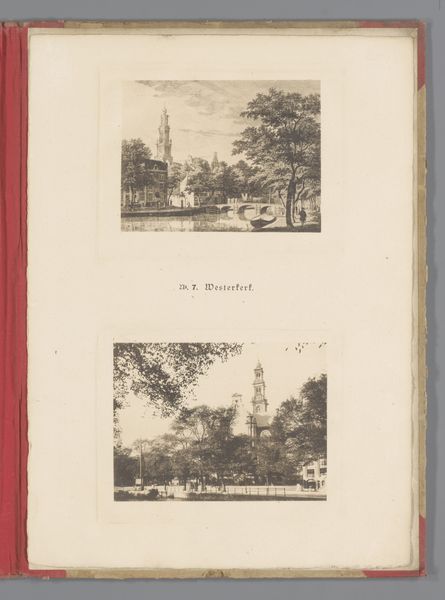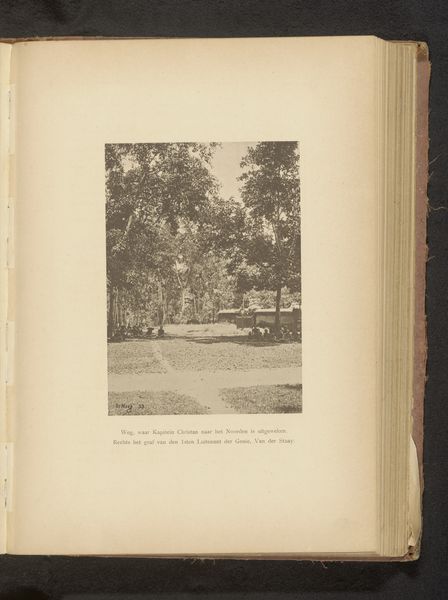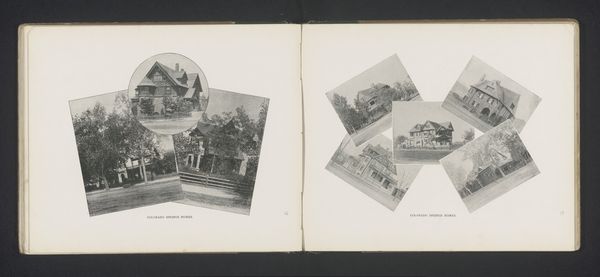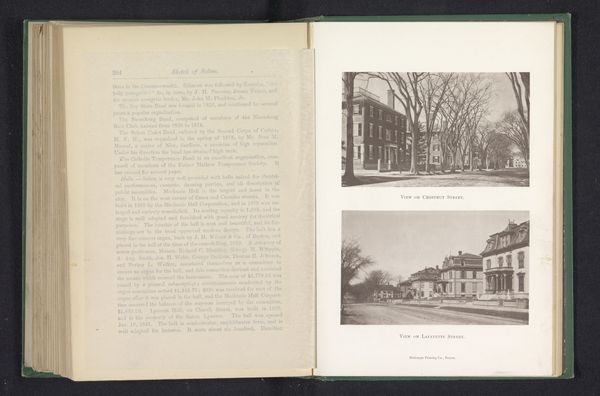
Twee gezichten op de Eerste Muiderpoort te Amsterdam, waarvan één reproductie van een prent door Caspar Jacobsz. Philips 1890 - 1900
0:00
0:00
anonymous
Rijksmuseum
drawing, print, paper, engraving
#
drawing
#
dutch-golden-age
# print
#
landscape
#
paper
#
cityscape
#
engraving
Dimensions: height 348 mm, width 250 mm, height 98 mm, width 138 mm, height 100 mm, width 135 mm
Copyright: Rijks Museum: Open Domain
These two images of Amsterdam’s Muiderpoort and its surroundings, rendered by an anonymous hand, capture more than just architectural facades; they echo a cultural memory deeply rooted in the city’s identity. Consider the trees lining the road in the upper image. The ordered rows evoke the structured landscapes found in classical Roman gardens. These were designed not just for aesthetic pleasure but to mirror the order and control of the Roman Empire. This motif, reappearing here in 19th-century Amsterdam, speaks to a continuous human desire to impose order on nature, reflecting societal aspirations for control and stability. But the image of a gate itself is even more potent, a symbol of both exclusion and opportunity. It reminds me of the gates guarding the entrance to cities throughout history. These gates acted as barriers against invaders, while also functioning as points of commerce and cultural exchange. The gate conjures a powerful, subconscious tension between protection and progress. The cyclical return of such symbols demonstrates the non-linear progression of cultural memory, constantly reshaping our understanding of the past in light of the present.
Comments
No comments
Be the first to comment and join the conversation on the ultimate creative platform.

